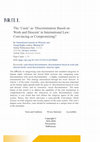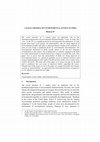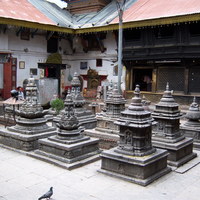Papers by Bhimraj M.

International Journal on Minority and Group Rights (Brill | Nijhoff), 2020
The reconceptualisation of caste discrimination as racial discrimination through the term ‘descen... more The reconceptualisation of caste discrimination as racial discrimination through the term ‘descent’ in Article 1 of ICERD enabled the international community to take cognisance of caste discrimination, which it had ignored for a long time. However, the government of India, opposing such reconceptualisation, maintains that ‘descent’ in ICERD refers only to race and not caste, contrary to the position of UN human rights bodies. Hence, whether ‘descent’ includes ‘caste’ is an important hermeneutical question addressed in this article. Based on the distinction between interpretation and application of a treaty, this article argues that India has accepted the application of ICERD to caste discrimination through its conduct and it cannot deny it now according to the principle of estoppel. This article then demonstrates the dynamic interpretation of ‘descent’, justifying it through the consensus analysis methodology of the ECtHR. Moreover, it is found that ‘descent’ was associated with ‘caste’ in British India.

International Journal on Minority and Group Rights, 2020
The difficulty in categorising caste discrimination into standard categories of human rights viol... more The difficulty in categorising caste discrimination into standard categories of human rights violations has forced Dalit activists into comparing caste discrimination with racial discrimination – a highly condemned practice in international law. This strategy materialised through the word ‘descent’ in Article 1 of the ICERD. Currently, caste discrimination has become important on the human rights agenda under the guise of ‘discrimination based on work and descent’ (DWD), and by extension, ‘racial discrimination’. The main theme of this article is to address the capability of the DWD mechanism to comprehensively capture the intricacies of caste discrimination. Upon analysis, it was found that DWD dilutes the religious aspect of the caste system. Hence, this article advocates a caste-specific Convention, which focuses on both religious and secular aspects of the caste system. This won’t happen soon; therefore, caste should be maintained as a unique form of DWD in the meantime.

NUJS' International Journal of Legal Studies and Research, 2018
The change of power in 2015 and Maithripala Sirisena becoming the President of Sri Lanka is said ... more The change of power in 2015 and Maithripala Sirisena becoming the President of Sri Lanka is said to have sowed hopes for a political solution to the ethnic conflict. But the President has openly expressed on several occasions his intention in not compromising the unitary nature of the state and the primary status of Buddhism, the prime reasons for the conflict, under any circumstance, in the new Constitution. This assertion by the current president reflects that Sri Lanka, the Germany of South Asia, is yet to learn a lesson from its historical mistakes. This paper analyses the effectiveness of a federal constitution as a political solution to the ethnic conflict of Sri Lanka. The author in this paper has argued that even if Sri Lanka comes with a federal constitution, it is difficult to retain the different ethnic groups united due to the difficulties in creating a common national identity, a mandate for the unity of deeply divided ethnic societies.
Book Chapters by Bhimraj M.

Contemporary Environmental Concerns: Multi-Disciplinary Aspects of Environmental Law (RGNUL, Punjab), 2020
The social structure of a country plays an important role in the distribution/deprivation of envi... more The social structure of a country plays an important role in the distribution/deprivation of environmental burdens/benefits. ‘Caste’ in India, like ‘race’ in the US, is a significant factor in environmental discrimination. It is the people from lower caste groups, the untouchables, who are being deprived of environmental benefits and share a disproportionate burden of the pollution. In spite of caste being a significant factor in environmental discriminations, the environmental discourses in India usually ignore or do not give adequate consideration to this aspect. The academicians or scholars engaged in the field are either intentionally or unconsciously turn a deaf ear towards this issue. This paper tries to prove how the untouchables in India are being deprived of environmental justice viz., denial of equitable access to natural resources and unequal implementation of the right to health because of their lower status in the casteist hierarchy. The main aim of the paper is to expose the gap in the field and to emphasize the vast scope of empirical studies regarding the issues. Though some of the issues set out in the paper are categorized under the broader concept of ‘untouchability’, an approach from environmental justice perspective is very effective to regain the lost rights.











Uploads
Papers by Bhimraj M.
Book Chapters by Bhimraj M.